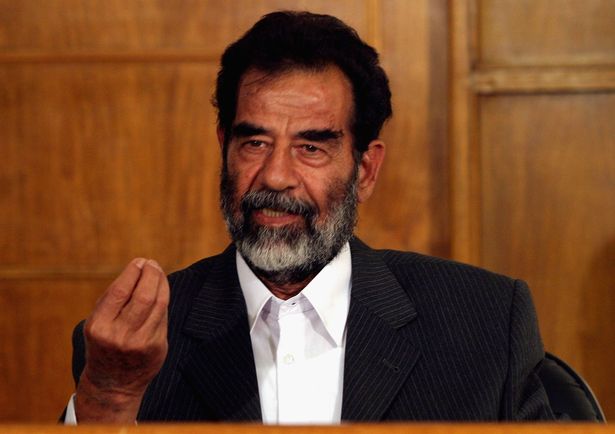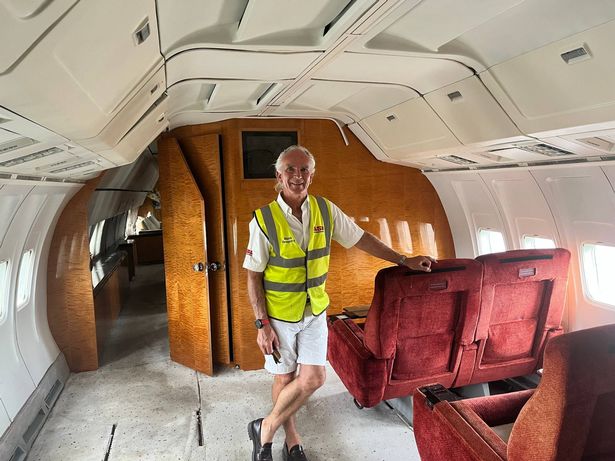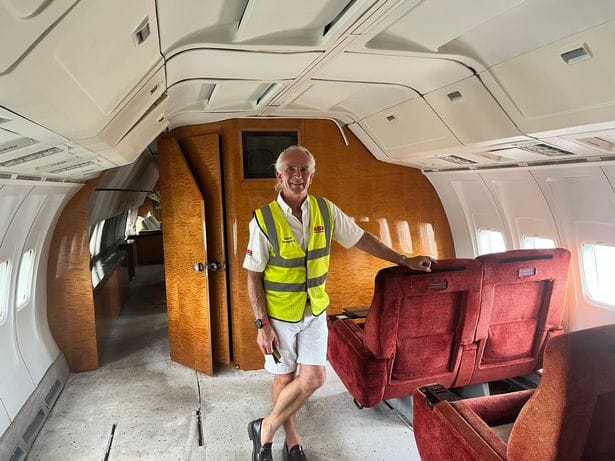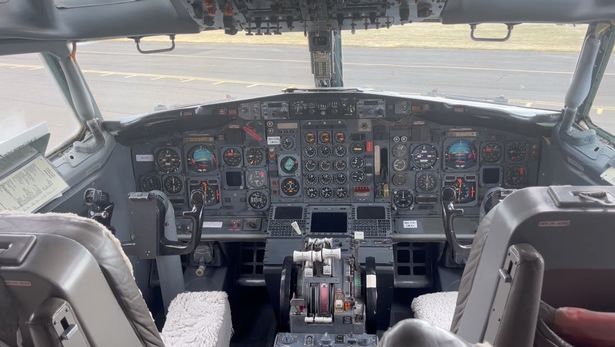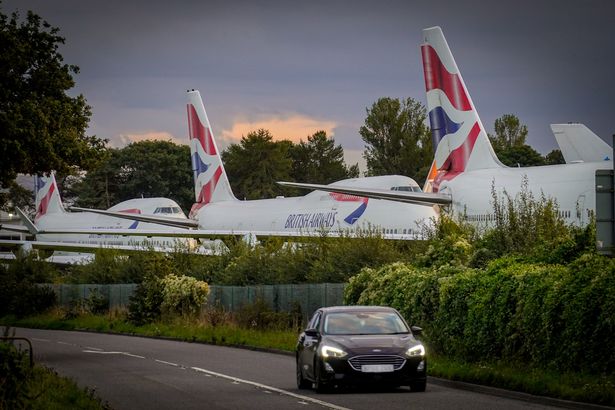A Cotswold plane scrappage company has been the unlikely resting place of Saddam Hussein’s stolen private jet – which is now being used in TV shows and movies, in part due to its excellent 80s interior
If you’re on the hunt for Saddam Hussein’s private jet, you might not think to look in the Cotswolds.
Yet, it’s in this picturesque part of England where you’ll find the former Iraqi dictator’s personal aircraft. Air Salvage International, a plane scrappage firm based at Cotswold Airport, has been the custodian of the VIP-equipped Boeing 727 for nearly a decade.
While most of the company’s planes are dismantled and sold off, sometimes fetching up to £10 million per jet, managing director Mark Gregory can’t bring himself to part with this particular flying machine.It’s not just its connection to Saddam (whose Iraqi Airways nicked Kuwait Airways’ entire fleet during the 1990 invasion) that makes it special, but also its retro ’80s interior.
Originally owned by the Kuwaiti Royal family, the 189-seat jet was gutted of its standard uncomfortable airplane seats and decked out with an array of kitschy furniture that could fill a retirement home. Think plush velour seats with extendable footrests, state-of-the-art JVC TVs embedded into mahogany walls, and glass vases brimming with plastic roses, all sitting next to unopened bottles of champagne.
Do you have an idea for an interesting place we can cover? Email [email protected]
READ MORE: Inside the eerie UK ‘plane graveyard’ where jumbo jets from around the world are ditched
Before the Iraqi forces swooped in and commandeered the Kuwaiti fleet, Emir Sheikh Jaber Al-Ahmad Al-Jaber Al-Sabah and other wealthy royals used the opulent plane for their global travels. Where there is now a patch of carpet overrun by mould, the Emir once sat on a specially built throne, using radio equipment to issue orders to his staff from 30,000 feet above.
Following the Western invasion of Iraq and Saddam’s execution, the private jet changed ownership multiple times until it was sold to Air Salvage International by Jersey-based Strong Aviation on 29 June 2016. Now at 45 years old, the aircraft’s value is virtually nil and its flying days are over – despite Mark maintaining it in full working order and taking it for a spin on the runway every ten days.
These days, it sees most action as a film set for TV programmes and films, including McDonald and Dodds, Casualty, The Lazarus Project, Hijack with Idris Elba, Star Wars, Mission: Impossible, and Doctor Who. Next time you watch a dramatic plane crash or runway scene on screen, keep an eye out for some suspiciously Gloucestershire-like countryside in the background. Or even Mark’s arms.
When he’s not making money from old planes or drumming away in his office by the runway, the ponytailed scrap tycoon can be partially seen on the big screen, “piloting” the Boeing 727 in its latest cinematic adventure.
Air Salvage International first began 30 years ago. Armed with redundancy money in the early ’90s, Mark bought his first plane and spent six months breaking it down into sellable bits. More than 1,400 aircraft later, the business is thriving and employs dozens of people to cope with the growing demand from the ever-expanding aviation industry.
And there are big bucks at stake. The equivalent of a commercial jet’s MOT costs around £1 million, which is why many plane owners decide to send their ageing aircraft to Mark instead. Sometimes as much as £12 million can be salvaged from them, either in reusable parts or recyclable materials.
